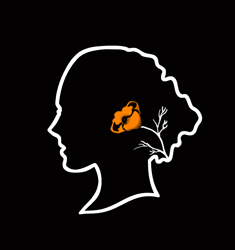Under the Sea
Mike and Mimi deGruy, oil on canvas 24x30, by Holli Harmon
Grade: Middle School
Subject: Oceans, Environmentalism, Creativity, Biology
Class Sessions: 1
Lesson Summary:
“Mike and Mimi’s great passions have extended from inspiring wonder about the world’s oceans to educating audiences about our impact on the planet. Their recent films have linked the ocean sciences with how we live, illuminating our impact on the environment.” Mike and Mimi’s story serves as a good, realistic launch point for middle school science and creativity. The lesson focuses on application of current science topics with real world issues such as ocean salinity, pollution, acidification, trash, over-fishing etc. The lesson below is a guideline which can be used for a variety of teaching points. Let your students be creative as you consider how to adapt this lesson to your classroom’s needs.
Lesson Objectives:
“[We need to] start looking at ourselves as part of the ecosystem. Without that sensitivity we trash it.”
Drawing connections between science class and real life problems
Creating a “way to be aware” a middle school environmental campaign plan which should have a certain kind of social and environmental impact by encouraging people to take action, or do something in their live’s differently.
Materials:
Portrait of Mike and Mimi deGruy
https://www.ted.com/talks/mike_degruy_hooked_by_octopus?language=en
The Nautlius https://en.wikipedia.org/wiki/Nautilus
Poster material/presentation day
Lesson Plan:
Do a review game for previously covered content on the ocean and environmentalism
Watch interview of Mike and Mimi deGruy
Give students guided notes while they watch: What stands out to you? What was the first creature Mike got to film? How do the two view the ocean? What do they want to encourage kids to do?
Show portrait of Mike and Mimi duGrey
See. Think. Wonder
Break students into table groups for them to read the essay of Mike and Mimi deGruy
Come back together and talk about how Mike and Mimi want the world to be changed.
Homework: student research groups on: ocean acidification, trash, salinity, over-fishing, sustainable fishing etc.
Class Session 2:
Students create presentations with action plans
Student’s present in the next class
Assessment:
Creativity and applicability of presentations
Contribution to discussion
Close reading skills
Standards Addressed:
CCSS for 6-12 Speaking and Listening Standards 5
Comprehension and Collaboration
1. Prepare for and participate effectively in a range of conversations and collaborations with diverse partners, building on others’ ideas and expressing their own clearly and persuasively.
2. Integrate and evaluate information presented in diverse media and formats, including visually, quantitatively, and orally.
3. Evaluate a speaker’s point of view, reasoning, and use of evidence and rhetoric.
Presentation of Knowledge and Ideas
4. Present information, findings, and supporting evidence such that listeners can follow the line of reasoning and the organization, development, and style are appropriate to task, purpose, and audience.
5. Make strategic use of digital media and visual displays of data to express information and enhance understanding of presentations.
6. Adapt speech to a variety of contexts and communicative tasks, demonstrating command of formal English when indicated or appropriate.
Created by: Katherine Kwong Intern F’16

